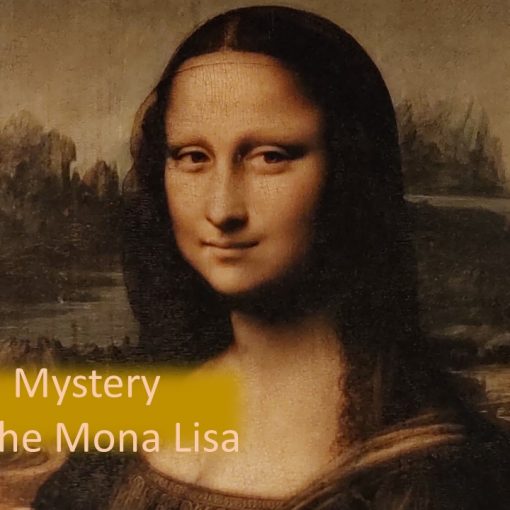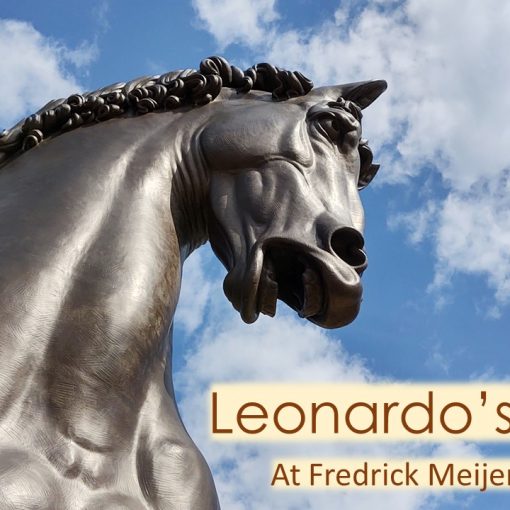Giovanni, our guide, met us outside the gate of Vatican City’s wall in February 2020. (Our visit to Rome preceded the world shut down due to Covid-19.) Giovanni’s enthusiasm for the intricate art showcased in the Holy City was inspiring. From the moment we entered the hallway lined with artifacts, I was astounded, too. I thought about how the church had funded most of the artwork during the Renaissance period. I was drawn in by the uniquely detailed renderings from five hundred years ago. The displays were fantastic.
As a twelve year old in Holland, Michigan I had seen the replica of The Pieta. Since then, I have been eager to learn facts about the artist, Michelangelo. Giovanni told us of Michelangelo’s talents and strong-willed attitude. I was captivated. Giovanni rattled information as I stood in a daze. I felt like we’d transcended time as we stepped back 500 years where lives were lived and art was created to honor the past.
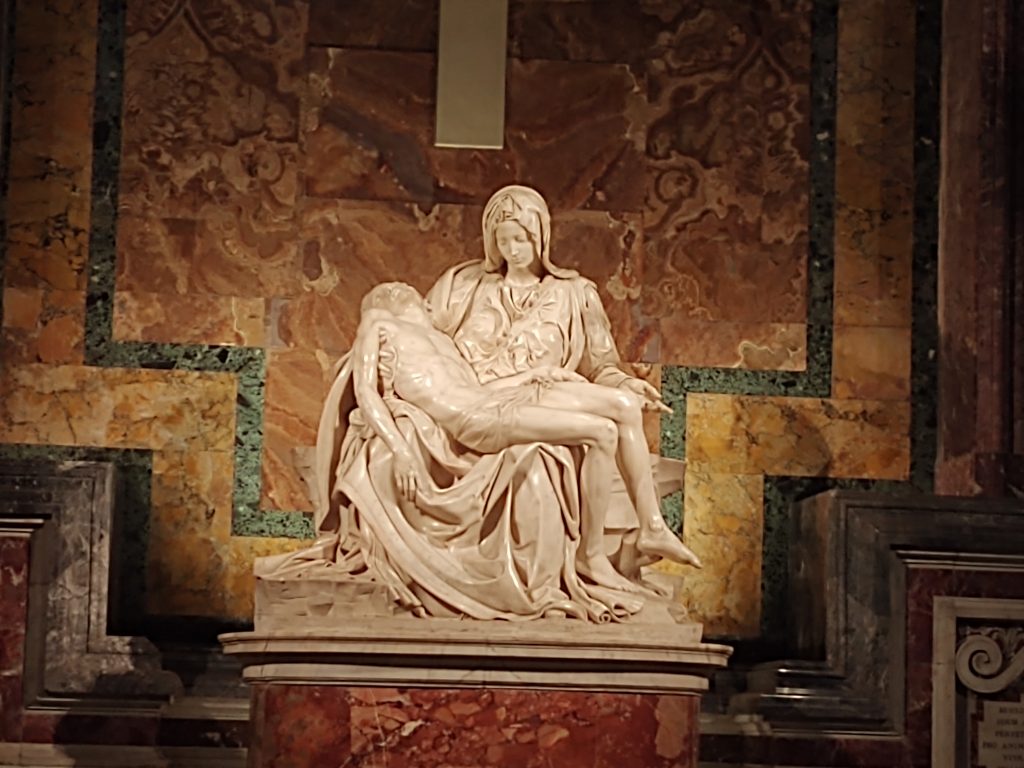
It is said that he could envision the finished sculpture when eyeing the raw stone.
Michelangelo
It took Michelangelo two years to carve the Pieta from a single block of marble which he’d chosen at the quarry. In an ego driven mood, he signed the statue “Michael Angelus” in reference to Archangel Michael. This angel is a leader who acts as a ‘captain’ to other angels and will defeat Satan in the end of days. With embarrassment, Michelangelo vowed to never sign another piece of artwork. He kept his word.
Unlike the previously stiff-structured sculptures, Michelangelo was able to carve the clothing into flowing cascades. His talent was recognized during his lifetime, which was unusual. He had been the only artist to have a biography written while he was still living.
In 1972 a man broke off part of Mary’s face and arm. It was carefully repaired. Now the sculpture stands behind bulletproof glass with a corded off viewing area in St. Peters Basillica.
With his commissioned work Michelangelo had received permission from the Catholic church to study cadavers so he could learn about human anatomy. His understanding is evident in his work.
The Sistine Chapel
Giovanni found a bench in the pinecone courtyard in the center of the Vatican. Here he explained the history of the Sistine Chapel to prepare us for our silent tour without photographs.
Raphael Tapestries
Giovanni’s eyes were wide and he held a smirk of excitement. “As we enter the Sistine Chapel, we will be in for an amazing experience! The remaining twelve Raphael Tapestries are on display. It is the first time since the Renaissance!” These pieces were reunited and displayed for only this one week to celebrate the artist’s 500th birthday.
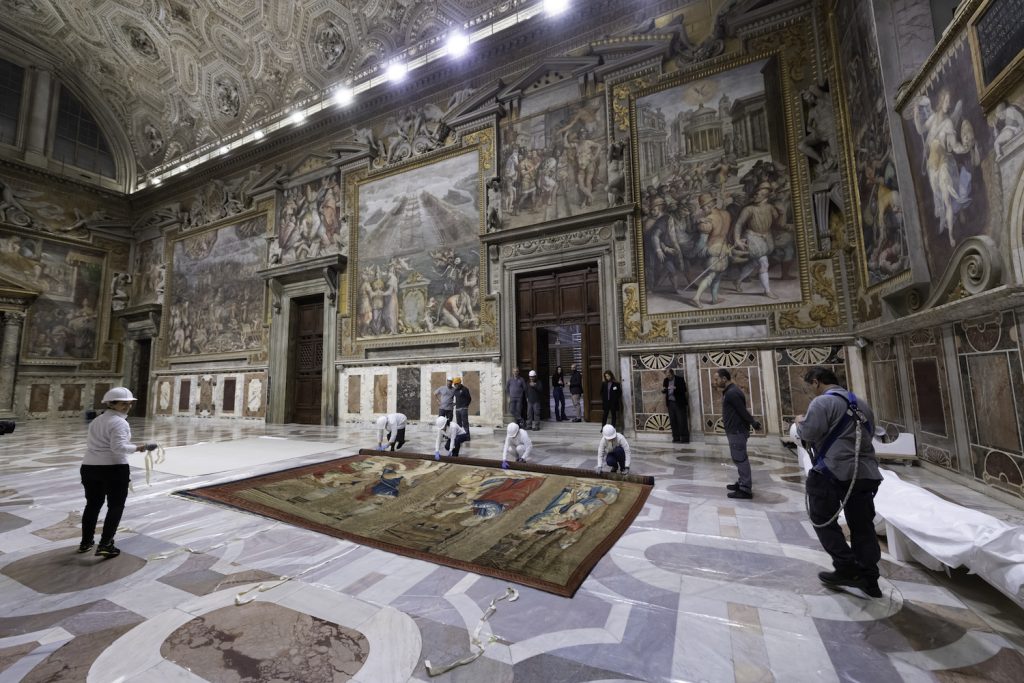
Photo courtesy of the Vatican Museums.
“We have waited for the celebration of 500 years of Raphael’s death to give the opportunity to share the beauty that is represented by the tapestries together in this beautiful, universal place that is the Sistine Chapel,” the director of the Vatican Museums, Barbara Jatta, told Artnet News On View. Sixteen tapestries had been commissioned by Pope Leo X in 1514. Raphael completed these for St. Stephen’s Feast Day, December 26, 1519. Unfortunately, Raphael never saw these on display as he passed away on April 6, 1520 at 37 years old.
Sistine Chapel’s History
The Sistine Chapel was built in 1470 commissioned by Pope Sixtus IV, which gave the chapel it’s name. Cardinals have gathered here since 1492 hosting papal conclaves. These prayer meetings have been held to vote for a new Pope. A special chimney is used to show the public the results of each vote that takes place during the days-long conclave. Black smoke signals that a two-thirds majority hasn’t yet been reached. When white smoke appears it shows that our world has a new Pope.
From 1508-1512 Michelangelo (33-37 years old) painted the ceiling of the Sistine Chapel. He had been working on Pope Julius II’s tomb when asked to paint. He was reluctant as he viewed himself as more of a sculptor.
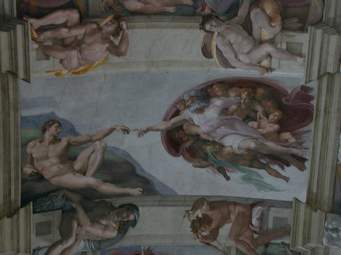
Here he depicts a God who is connected to the human race. Up until this time God had been represented as being aloof and unconcerned with humans in artwork until Michelangelo’s Sistine Chapel. Some theorize that the shape behind God is that of a human brain showing God giving humans intelligence.
Michelangelo actually painted standing up, contrary to the 1965 film, “The Agony and the Ecstasy.” He had designed a set of scaffolding for himself and his crew to paint the frescoes.
Along the top of the Sistine Chapel are rectangular paintings which display the profits of Jesus. The triangular frescoes above these show the genealogy of Jesus.
For over five centuries the frescoes have held up well. In 1797 there was a nearby explosion of gun powder and a piece of the ‘Noah’s escape’ fresco crashed to the floor.
The Last Judgement Painting
At 62 years old Michelangelo was invited back to Rome to paint “The Last Judgement” on the back wall of the Sistine Chapel. This shows the second coming of Christ and His judgement on the people. There are 300 figures in this final work of Michelangelo. It caused quite a stir among the group of Cardinals.
After eleven months of work, the Cardinals put a stop to Michelangelo’s painting reporting that “This looks like a typical pagan orgy!” Biagio da Cesena, the Pope’s master of ceremonies, was upset as well. Cesena spoke ill of Michelangelo and insisted that this work was disrespectful.
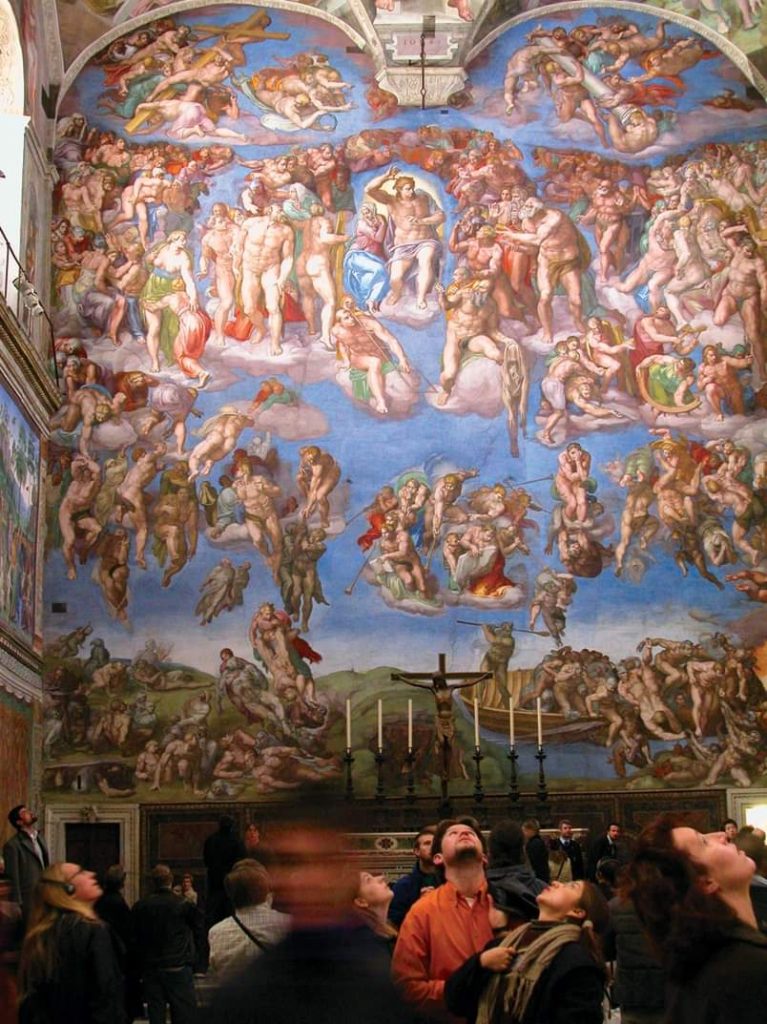
In the center the painting shows the second coming of a beardless Jesus who is casting his final judgement on the people. Mary is at his right side. She is looking at all those who are being saved and raised from their graves by angels. Flanking Christ are John the Baptist and Peter who are holding the keys to Heaven. Below Jesus (on the right) is Saint Bartholomew, who had been martyred when he was killed by the flaying of his skin. He is holding his skin which carries Michelangelo’s self portrait.
Charon is seen bringing the damned to Minos at the gates of hell. In a mocking way Mino’s face closely resembles Cesena’s (the master of ceremonies who had complained vehemently about Michelangelo) complete with donkey ears.
In 1560 Pope Pius IV had ordered that fig leaves were to be placed over the figures’ genitals. When restorations commenced from 1980-1999 the fig leaves were carefully removed as well as layers of dirt and grime from centuries of exposure.
As we wove our way around the room the mumbling of the crowd steadily became louder. Suddenly, a suited man standing near the entrance bellowed, “Calmatevi!” (Italian) Shoulders stiffened in the crowd and people turned their heads toward the guard. “Tranquila!” (Spanish) “Calmer!” (French) “Quiet!” Individuals side-eyed others in their groups sharing their worry for being scolded. I had been illegally clicking a few photos and became nervous about being apprehended. I casually glanced toward the exit and there stood Giovanni. I nodded my head toward the door to show Chuck it was time to leave. He answered with a smile and nod. We silently followed Giovanni.
More Tapestries
With a hop in his step, Giovanni brought us down a hallway. “Here are some tapestries that you’ll be allowed to photograph.” Giovanni broke the silence. These were intricate weavings which captured expressions just as if they had been painted. I marveled.
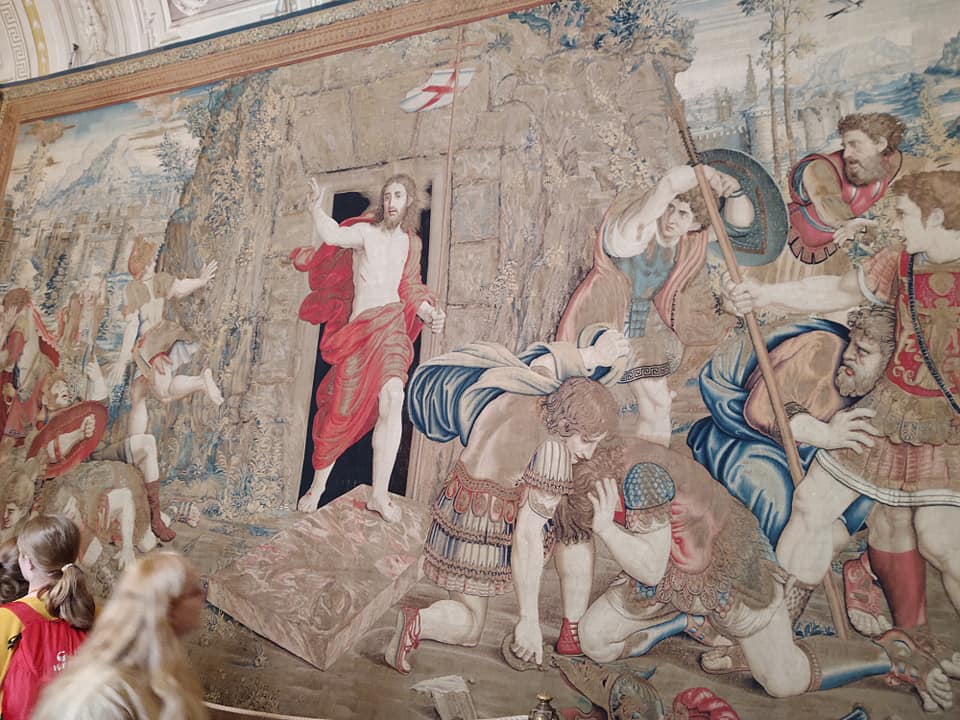
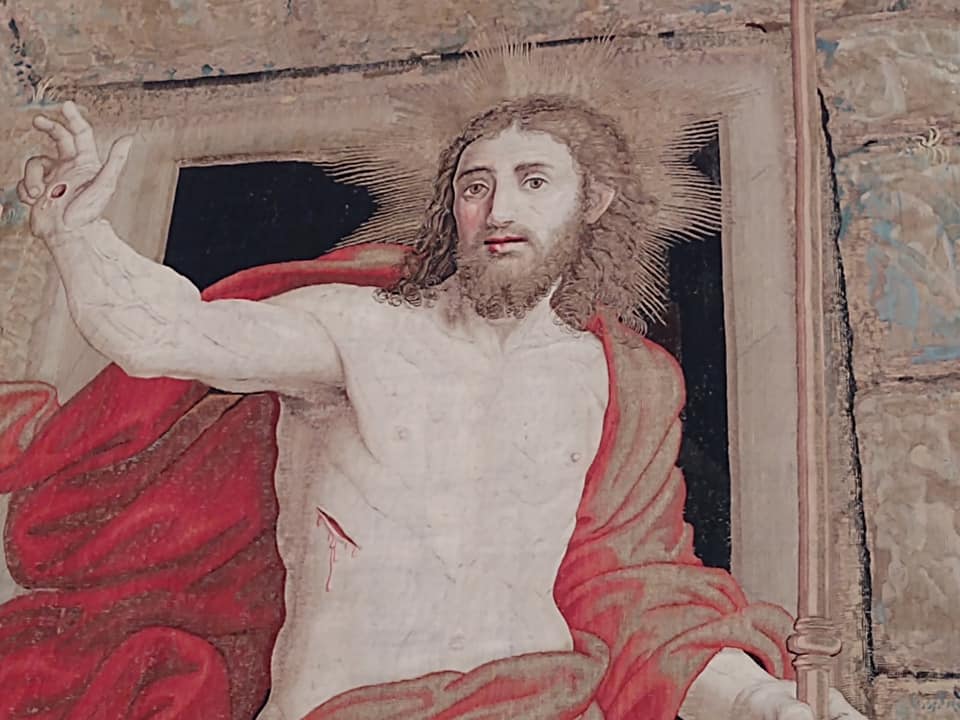
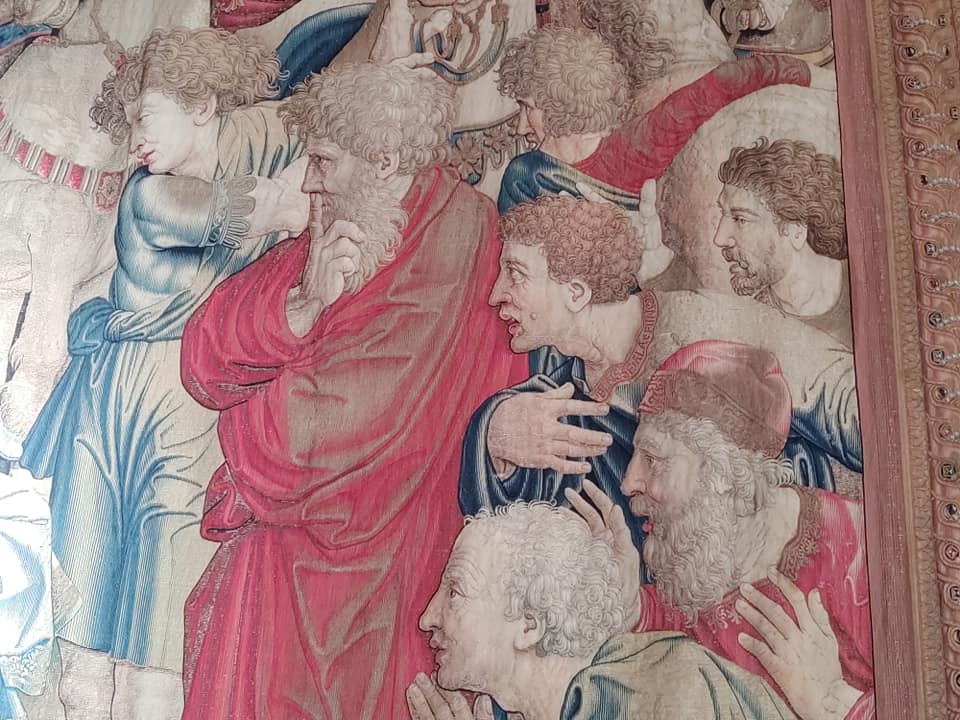
The expressions and shading all accomplished with fine woven thread was remarkable!
The Cartography Hallway: Miracles of God and Scientific Knowledge
Giovanni always explained the significance of an area before we entered so we could fully appreciate the history of the artwork. Pope Gregory was originally a Dominican Priest who wanted to demonstrate the miracles of God alongside the knowledge of science. He commissioned this cartography hallway with glorious maps and stunning relief artwork on the ceiling.
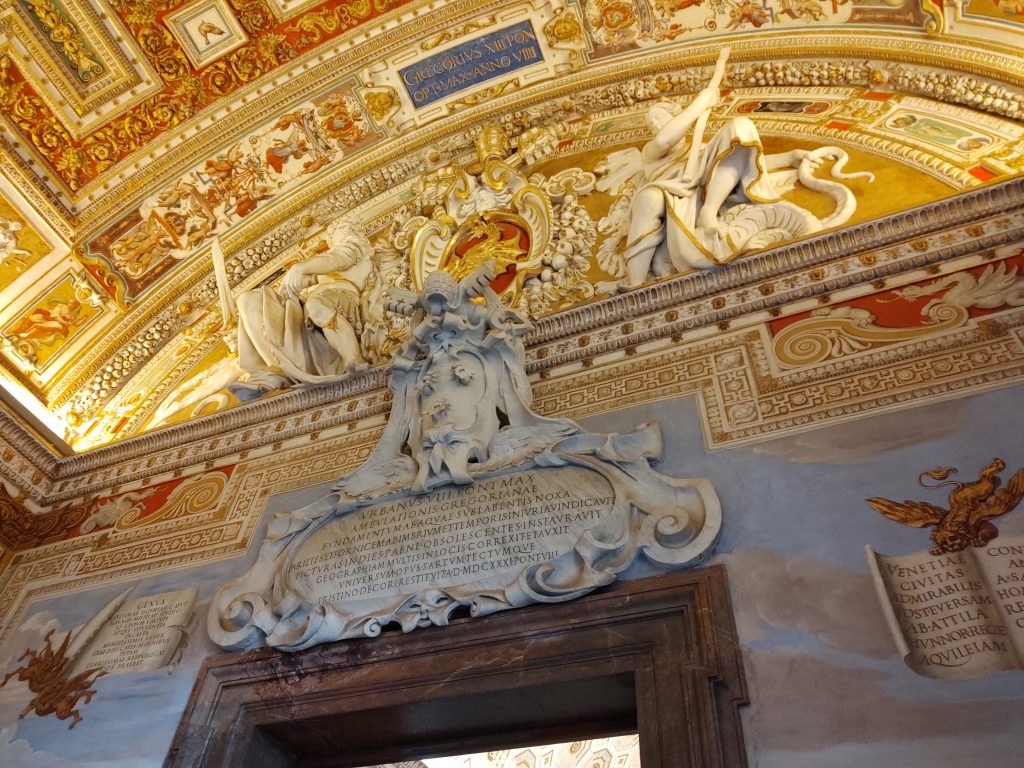
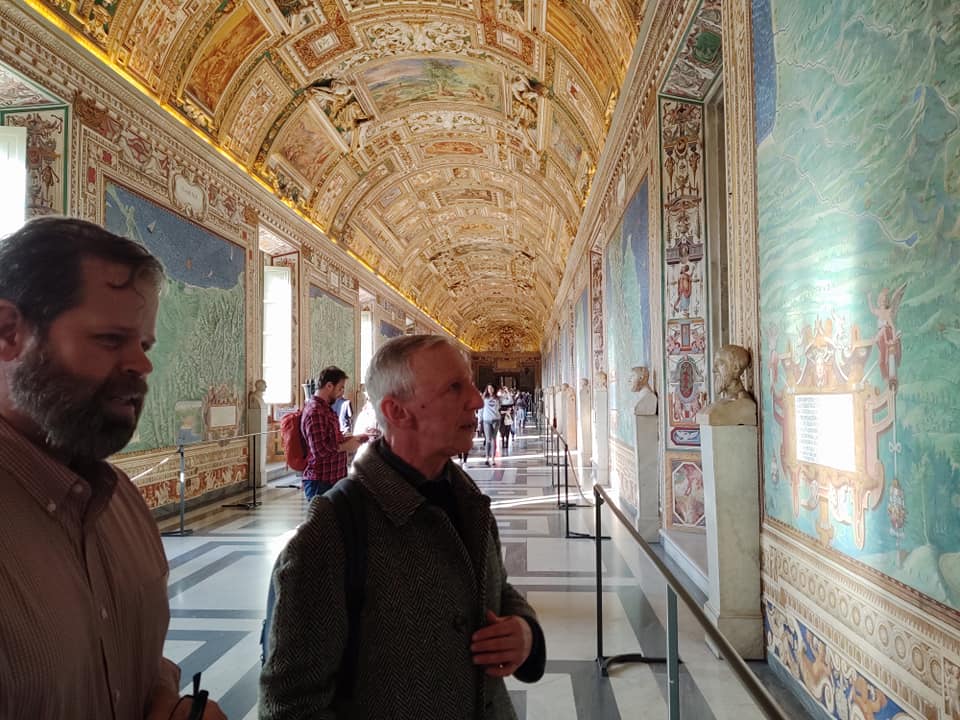
Pope Gregory commissioned this display in 1580. He wanted to merge the miracles of God and the wisdom of science.
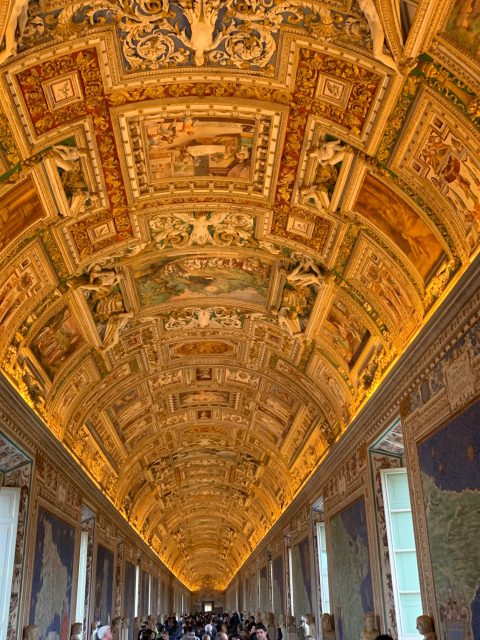
Pope Gregory had bumble bees as his official symbol. There are bees depicted throughout the artwork in this hall.
The Scala Sancta-“The Holy Stairs”
Around each corner and down every hallway the reverence was evident as we toured silently through sanctified areas.
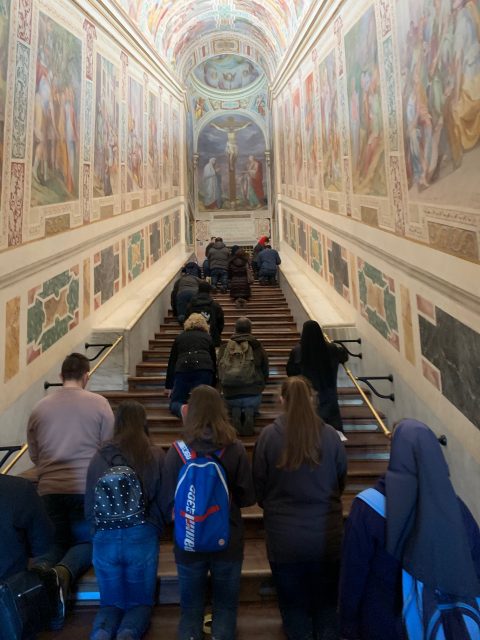
As Jesus climbed the 28 stairs his blood fell in three places which are marked with medieval crosses. The original marble steps have been covered with wood to allow many visitors to devoutly retrace Christ’s path to judgement.
At the top of the stairs is a prayer room called, “The Holy of Holy.” It has been kept for the reigning Pope to use for prayer.
Striking Artwork
The vast amount of intricate artwork kept my attention. “Wow! Look at this!” Every hallway and nook displayed unique installations. “Oh my!” I’d say. I continued to capture numerous pieces with photographs.
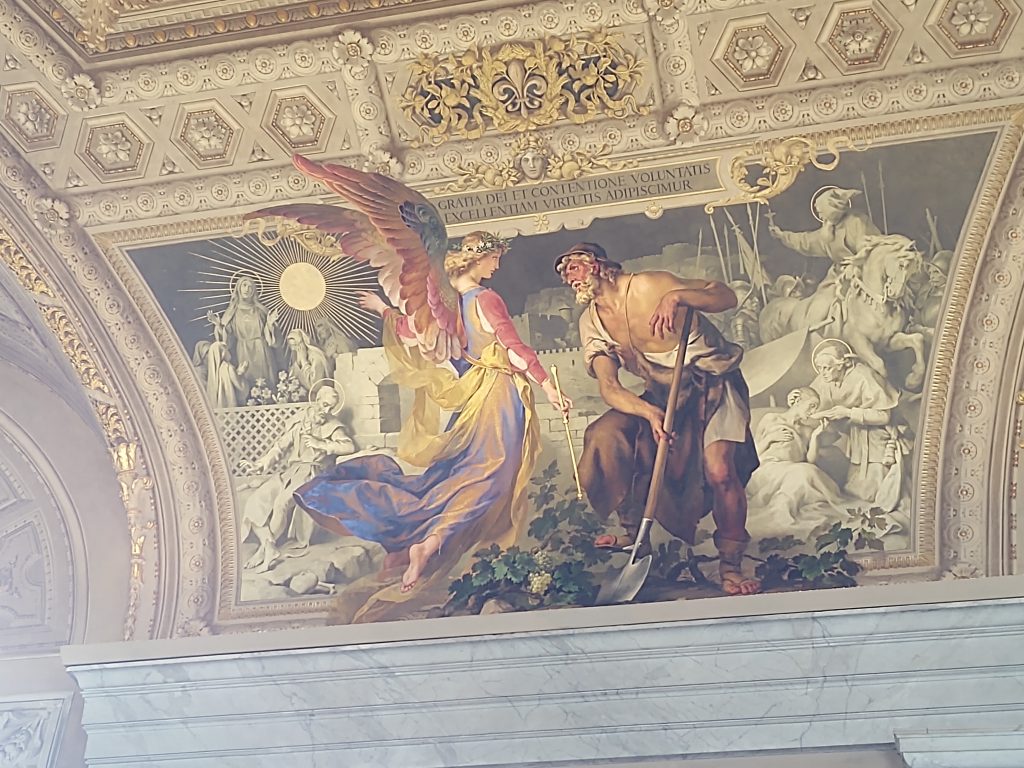
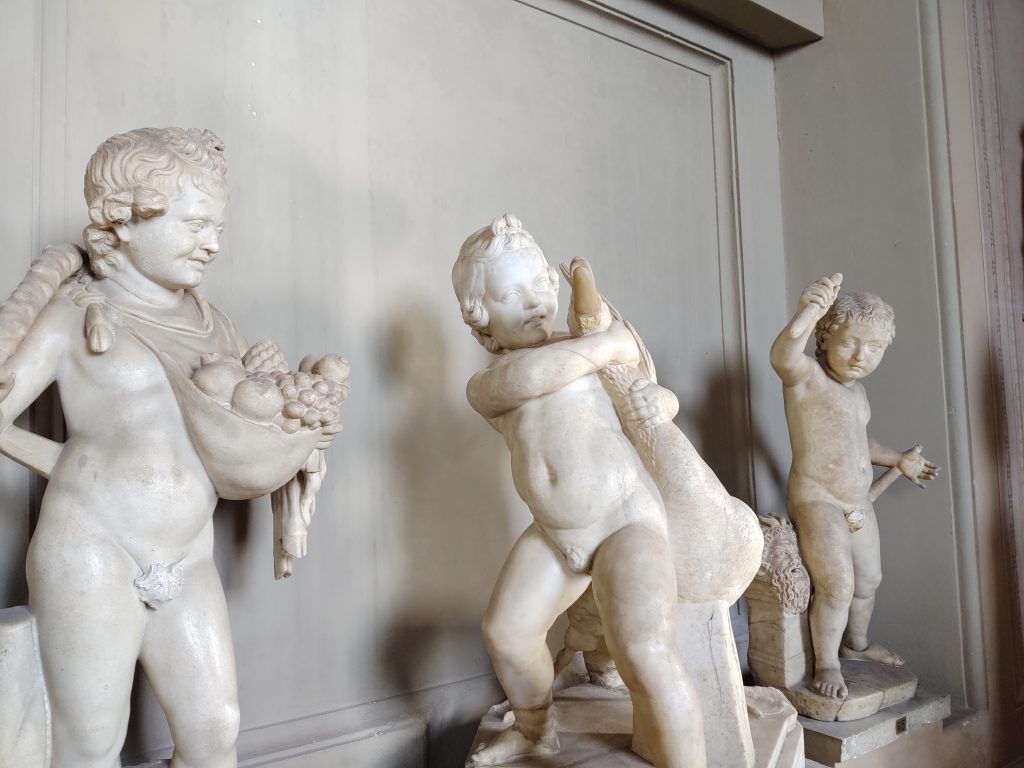
“I love how the child is struggling to tame his goose. Every time I come through I find interesting pieces of art.”
St. Peter’s Basilica
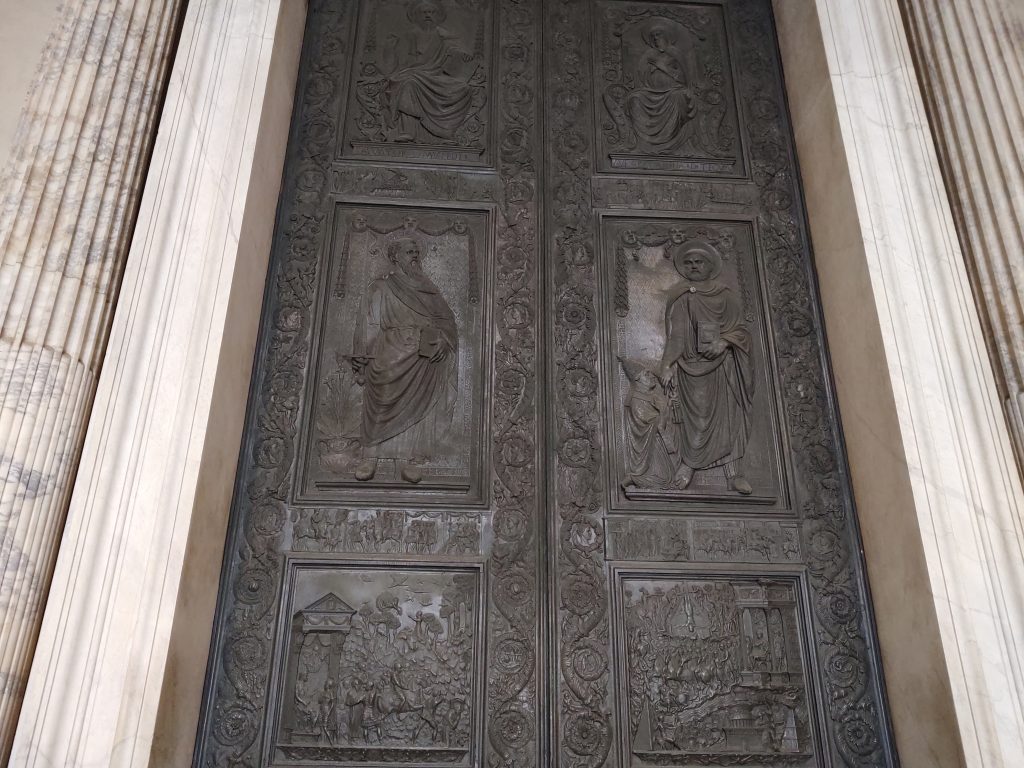
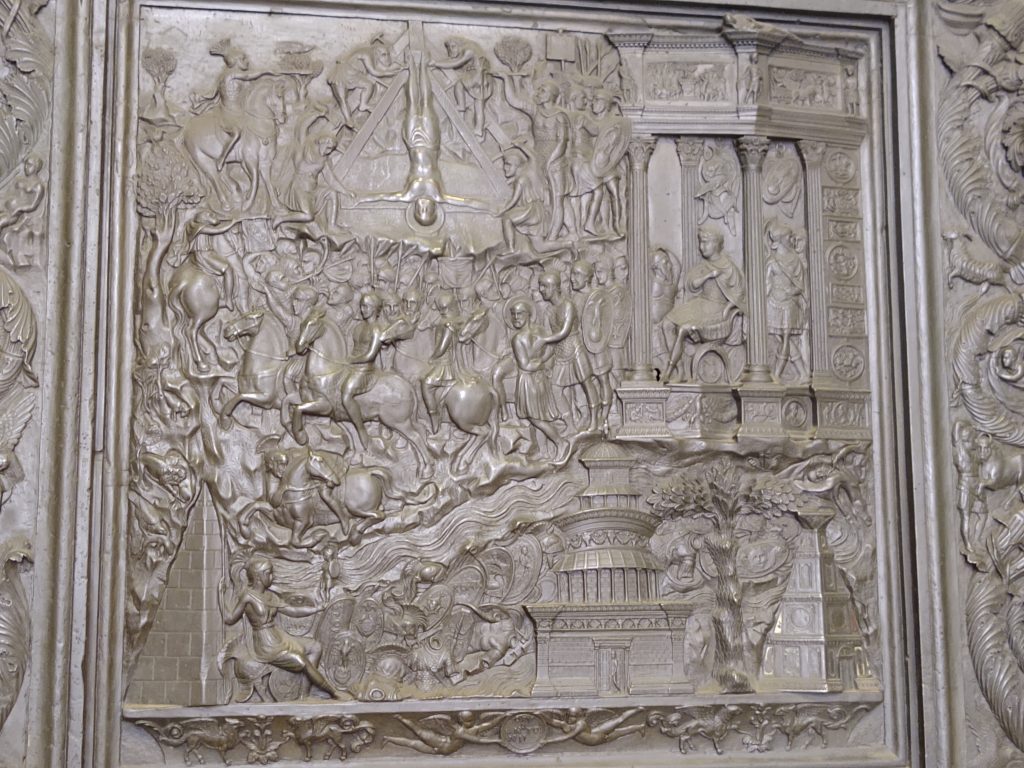
Peter was martyred by the church for his noble leadership and sacrifice
which deemed him a saint of the church.
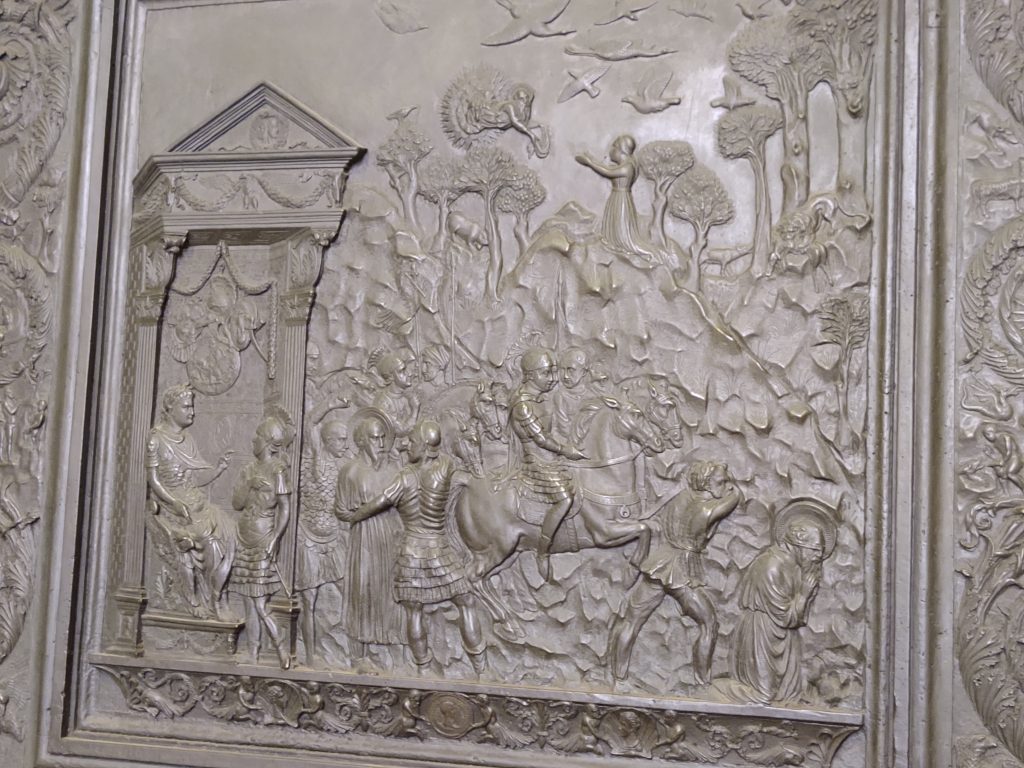
Entering St. Peter’s Basilica was unlike any place I’d ever been. The huge space had many grottos along the sides containing tombs and niches for praying. One niche included the Pieta by Michelangelo , which was mentioned at the beginning of the article.
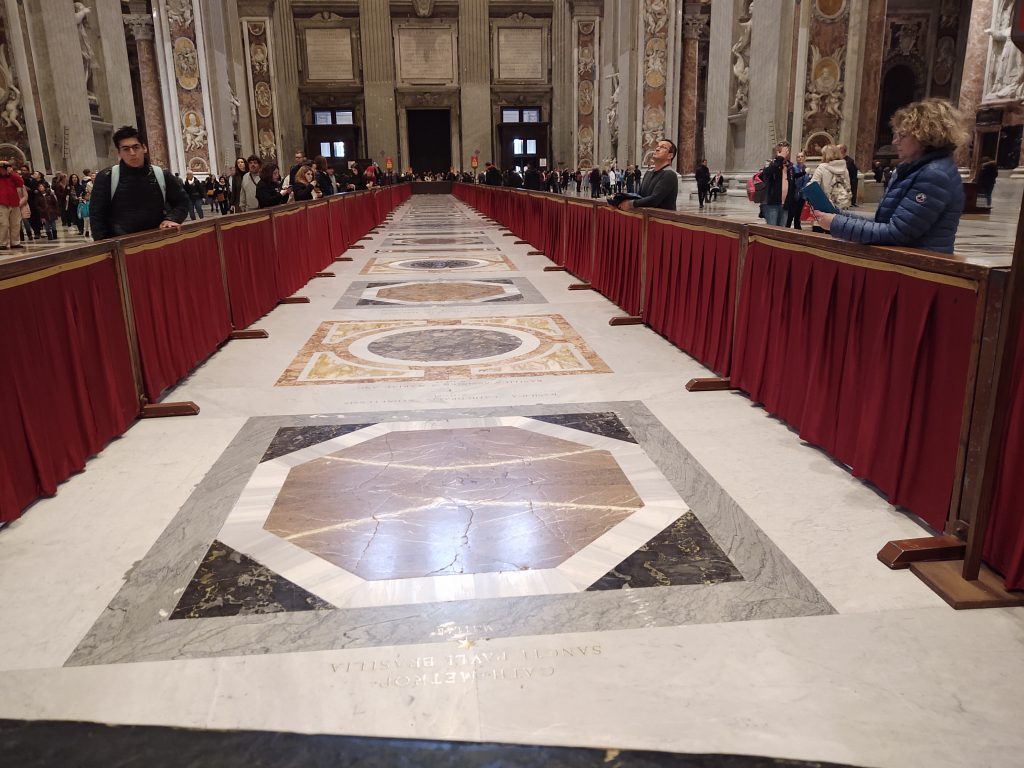
St. Peter’s Basilica was built in 1505 under Pope Julius II. It took four years to complete. It measures 500 square meters. There are 300 figurines throughout the church.
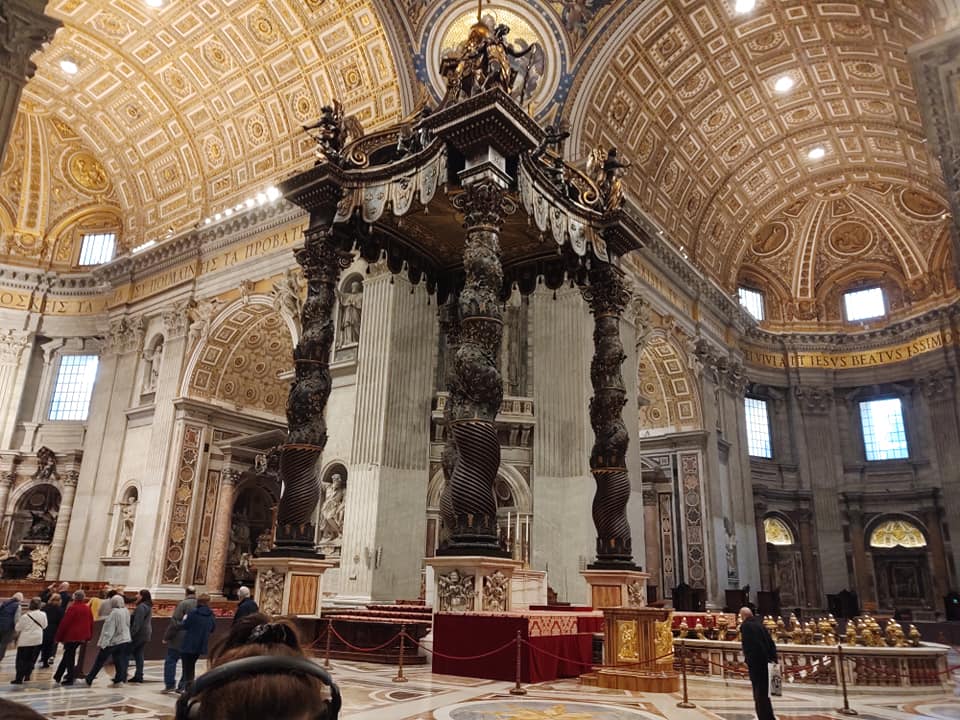
Also, the secret archives are stored under the altar as well.
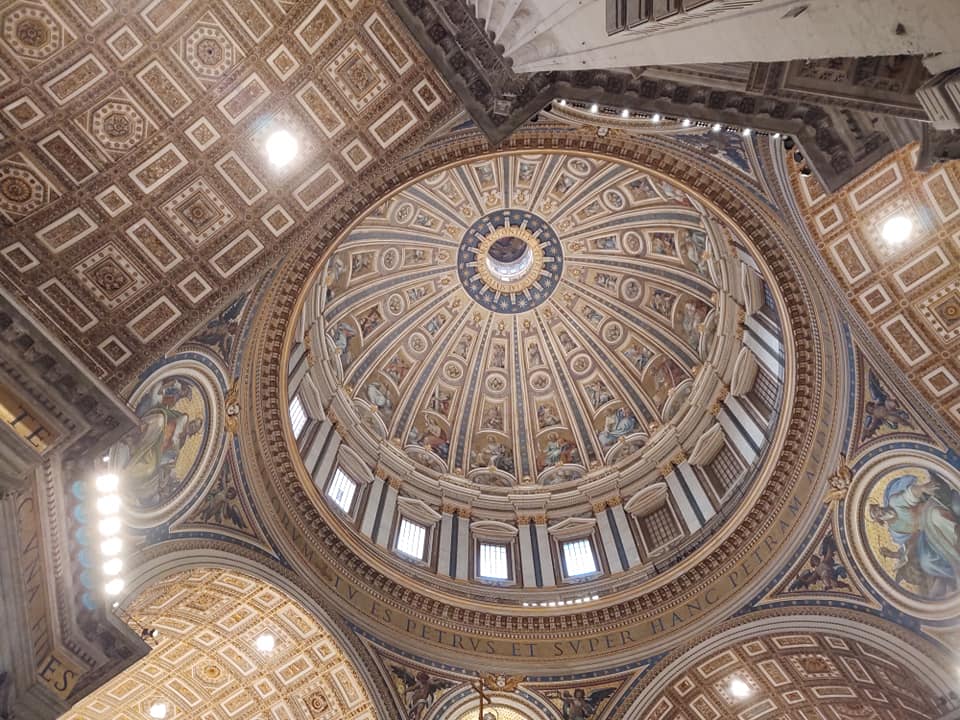
Below this sanctuary holds the secret archives with sensitive documents. Some include the “Chinon Parchment,” which are the minutes from the trials against the Knights Templar. The Roman Catholic military was tried for heresy and blasphemy during the Crusades. The documents are stored safely here. It is reported that the Fatima Apparition secrets are held here as well.
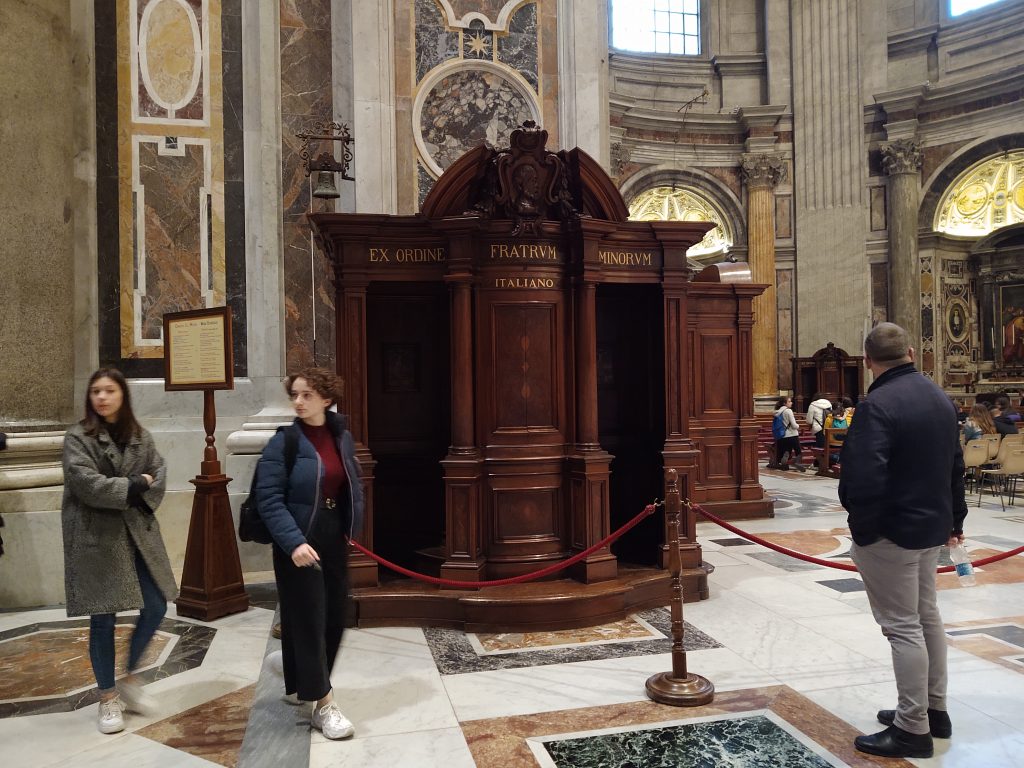
The individual confesses his or her sins.
The priest gives instructions to recite prayers for penance.
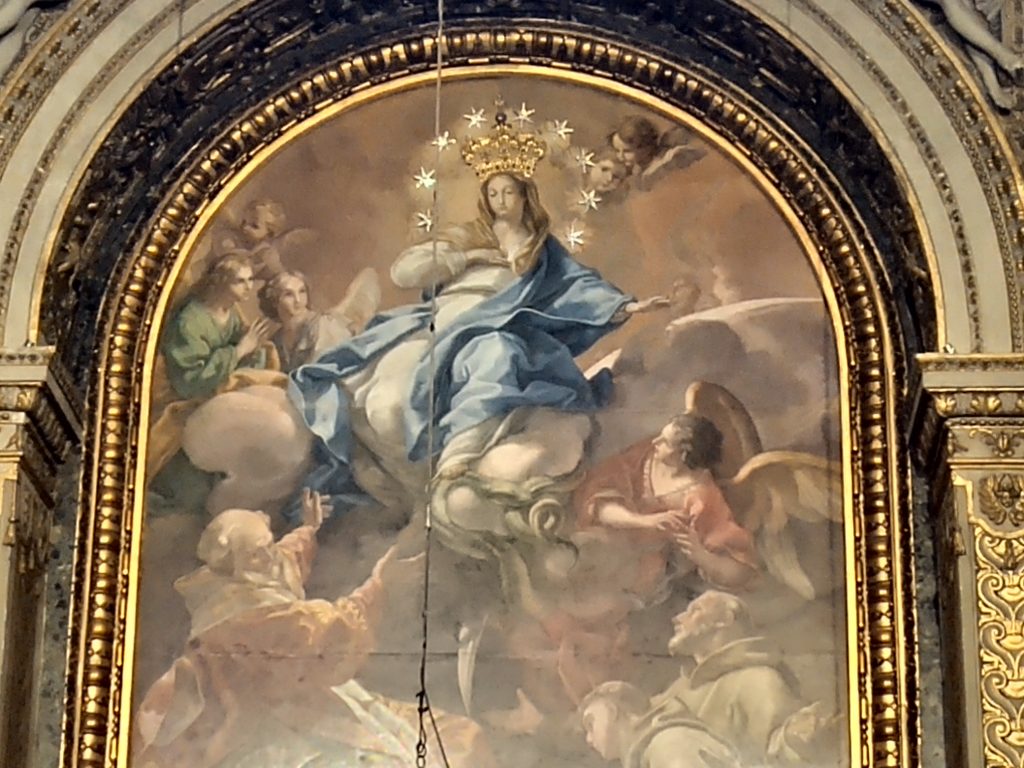
Pope John
As we walked by a grotto, I couldn’t help but notice a body laid out in a glass coffin. I asked Giovanni about who this was.
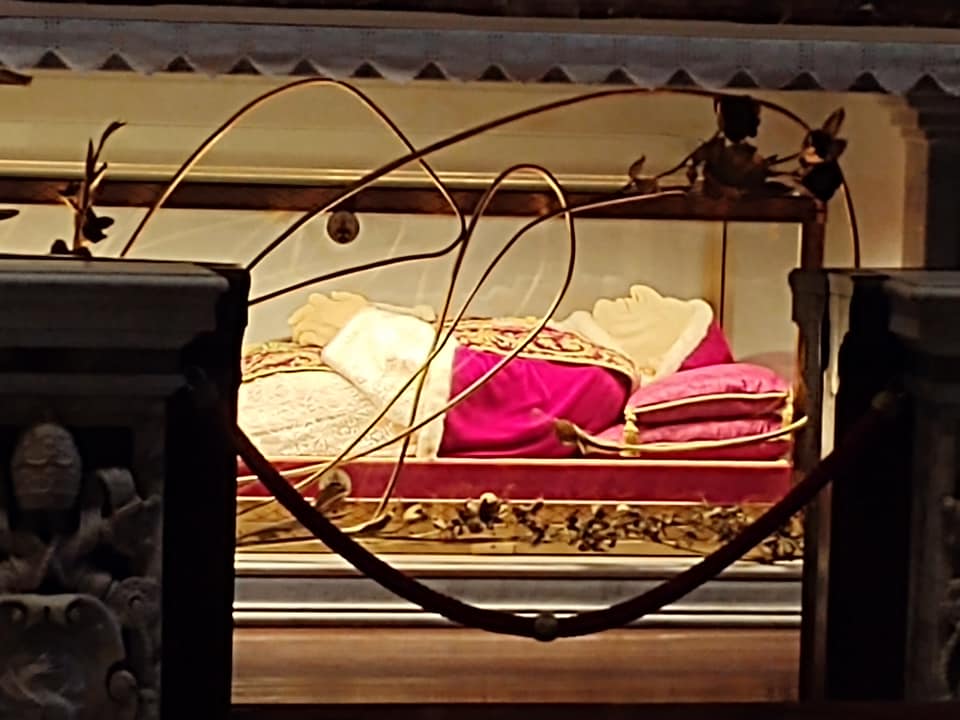
He requested that his body be dipped in wax and preserved.
St. Peter’s Square
We pushed the heavy doors open to reveal a the damp courtyard, St. Peter’s Square. I recalled watching television as a child and witnessing the Pope performed mass to a crowded square full of devote individuals. It was an honor to stand here surrounded by statues of saints.
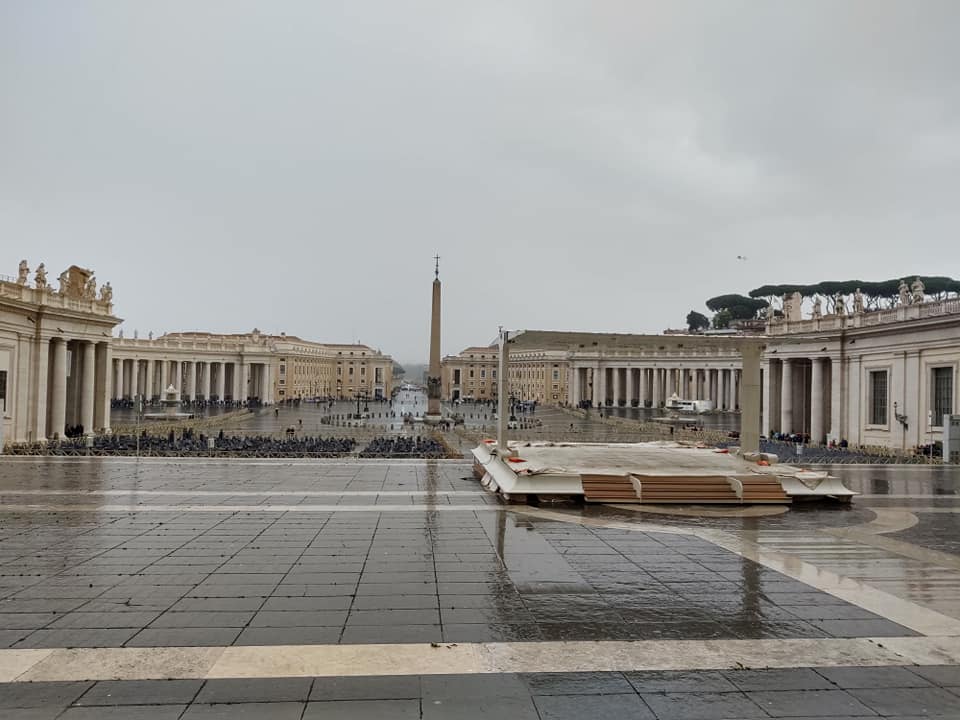
Along the top of the walls are one hundred-forty saints of the Roman Catholic church. These were constructed by Bernini between 1656 -1667 as the courtyard was constructed under the watchful eye of Pope Alexander XII.
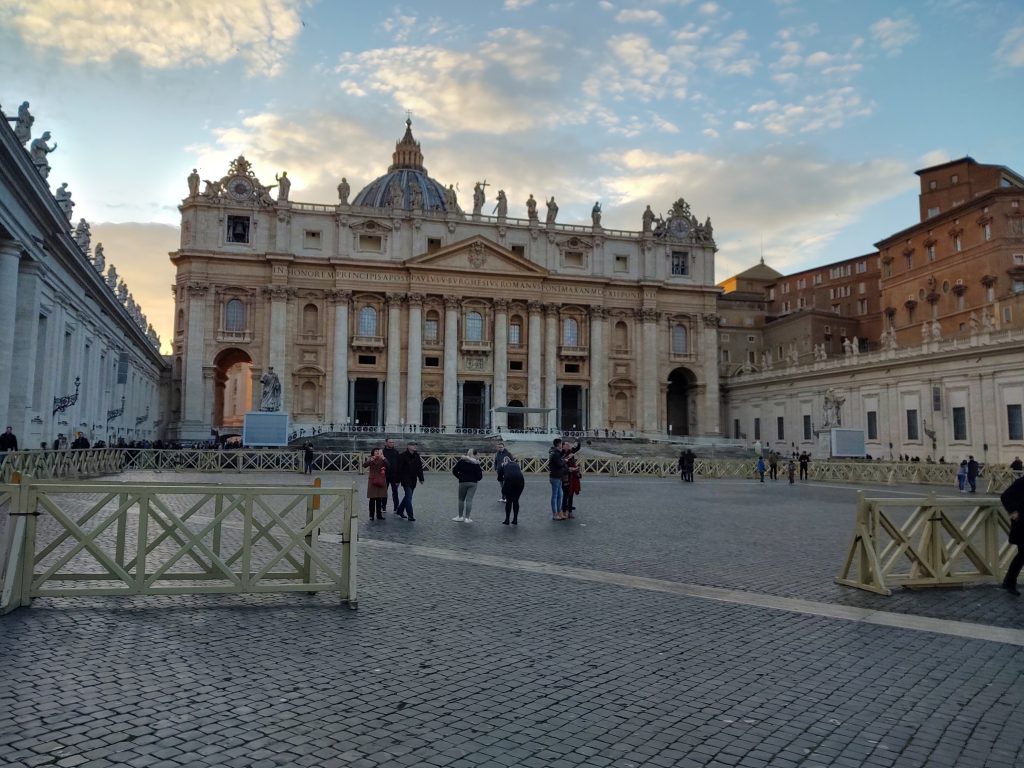
Every Wednesday Pope Francis would hold audience with the public (pre-Covid). He would sit on the right side.
He would welcome the people to share their prayers and he’d bless them.
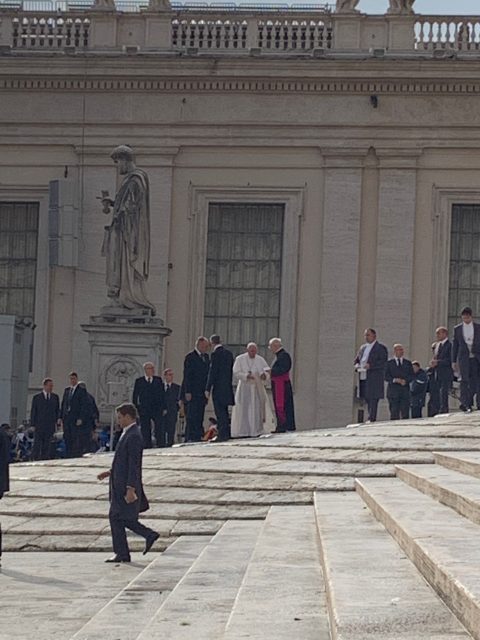
Photo Credit: Father Libby
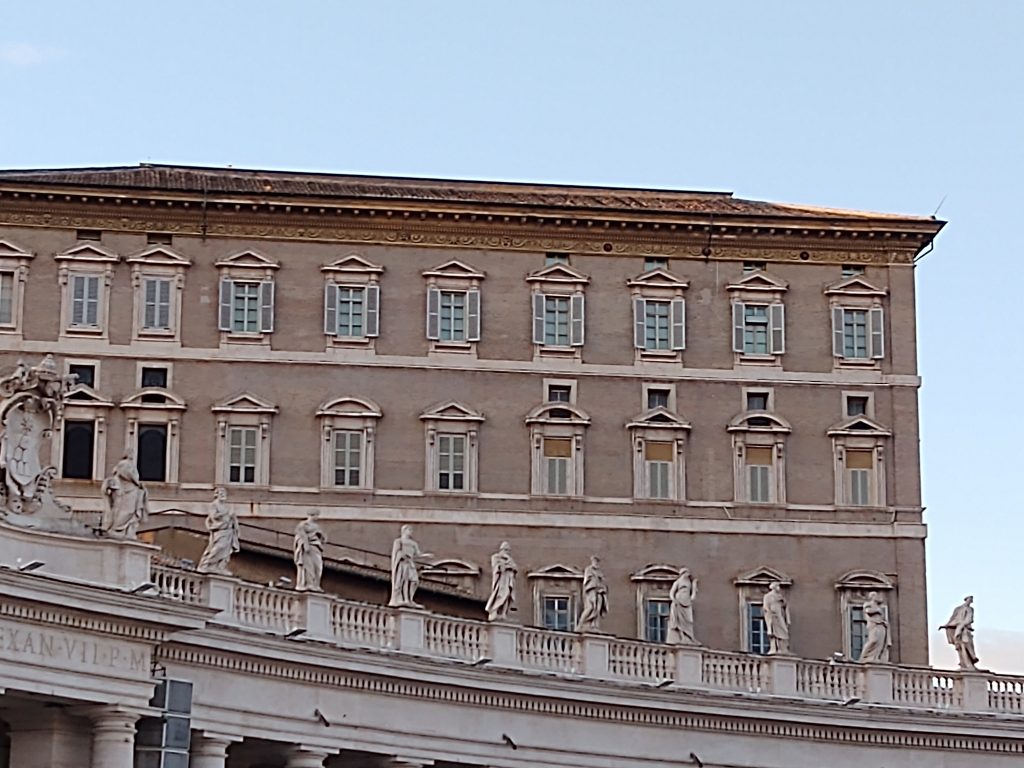
from the top floor through the second window from the right.
The Swiss Guard
The Swiss Guards were started in 1506 by Pope Julius II. The troop’s purpose is to patrol the Vatican. Currently there are one hundred-thirty Swiss Guards. Qualifications to join the Swiss Guard include being a devout Catholic who completes his first training courses in Switzerland. One must be between the ages of 19-30, 5 feet 8 inches tall with a high school diploma.
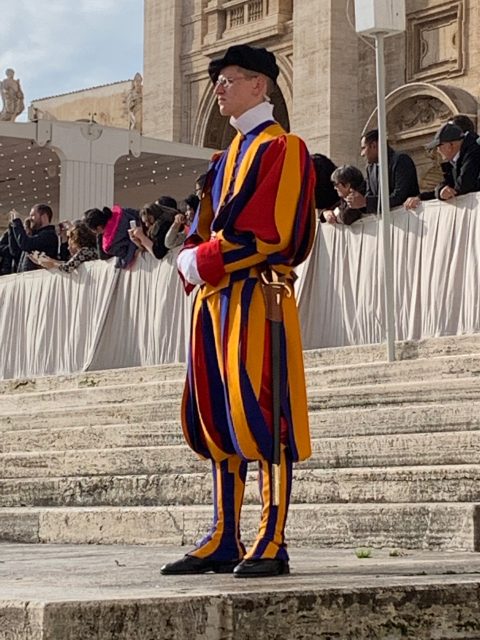
Photo Credit: Father Libby
Once arriving in Rome the elect must successfully accomplish five weeks of additional courses to receive the rank of “Halberdiers.” This name comes from the Halberds which are weapons carried since the 14th century.
The candidate’s family is invited for the ceremony and then has a private audience with the Pope. After one more year of coursework and learning Italian, the candidate is then ready to go on “Honor Duty” and wear the Gala uniform. “Honor Duty” is when the guard is holding the halberd in his hand. He should not be approached. If the guard is holding his hands together, facing the crowd, it is safe to engage him and ask him questions.
The Vatican Hotel
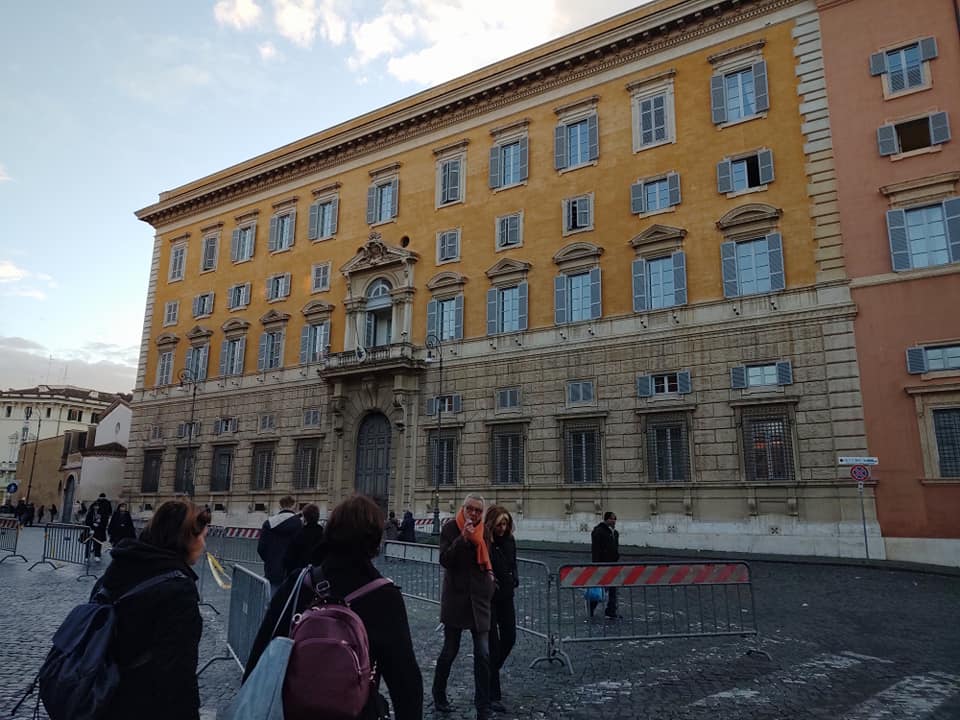
Pope Francis had it converted into housing for people in need.
Thank you for joining me on our visit to the Vatican. Giovanni’s knowledge and enthusiasm gave us insights into the artifacts and ancient times that we would have missed touring on our own. The fact that Giovanni himself had to stop and take pictures is proof that there’s so much to absorb when taking an excursion in a place with an incredibly long history.
Related Links:
A sculptor, Timothy Schmalz, has a new piece at the Vatican as well as several in eastern Michigan. Here’s the article I’d written about his sculpture, “Dine With Jesus.”
Restless Viking merchandise is now available!
Resources:
Father Libby Holy Rosary Church, Cedar Michigan
https://news.artnet.com/exhibitions/the-sistine-chapel-raphael-tapestries-1783185
https://www.cnn.com/style/article/vatican-holy-stairs-jesus-intl/index.html




